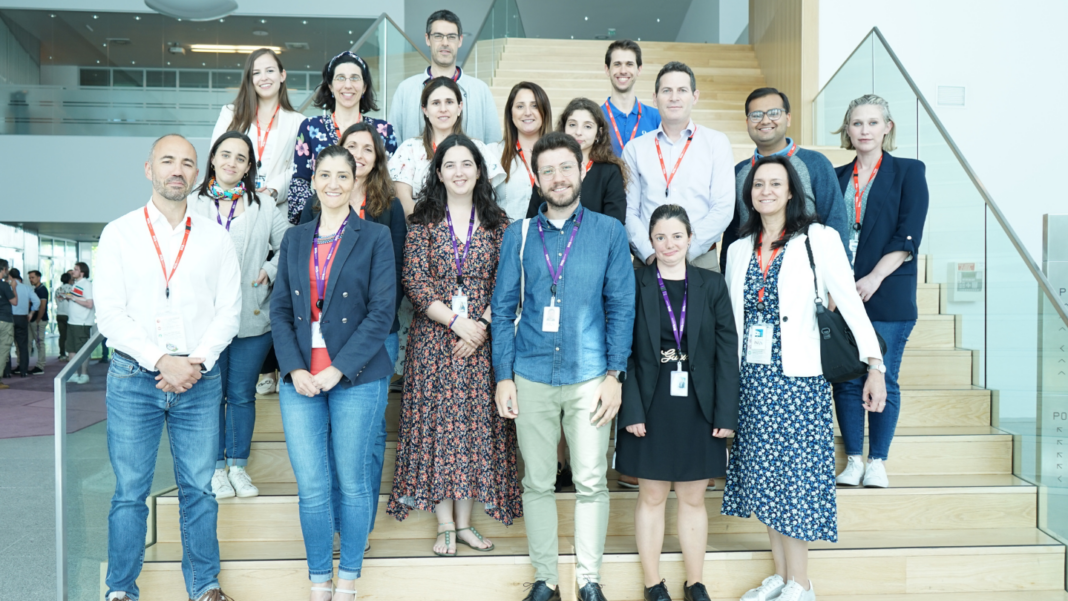In 2020, the journey of 11 strategic research projects (R&TD Projects In Co-Promotion) began, combining the efforts of companies and academic institutions in Portugal with the University of Texas at Austin (UT Austin) in the search for answers to emerging societal challenges.
Although they faced challenges and constraints during their three-year execution – the pandemic was probably their major hurdle – these consortia should be completing projects by June. It’s time to take stock of the collaboration, present the results to key stakeholders, and think of ways to keep the ball rolling after the current funding.
From our side, a great expectation about the outcomes of these projects is brewing, and our radar is sharper at detecting opportunities to get to know them.
One of those opportunities arrived on May 17th with an open session of the SENTINEL project. From our headquarters, in Porto, with cameras, microphones and a thirst for curiosity, we set off further north to the International Iberian Nanotechnology Laboratory (INL) in Braga, where the transatlantic consortium had been convening for two days.
Over the past three years, SENTINEL has been developing a new way to monitor patients with prostate cancer, one of the cancers that most affect men (about 1 man in 8 will be diagnosed with prostate cancer during his lifetime). To this end, the project has brought five partners together: Stemmatters, INL, UT Austin, Life and Health Sciences Research Institute (ICVS) and Centro Clínico Académico de Braga (2CA Braga), each being a piece of a jigsaw puzzle. To put it simply, the partners have been working to hand out a monitoring technology to detect relapses earlier and painlessly, thereby improving cancer patients’ chances of survival. Let’s know the role of each partner and how they come together to compose the SENTINEL puzzle, how the developed technology works and what needs to be done for the project’s results to move along after the current funding ends.
The SENTINEL puzzle
Following initial therapy, it is estimated that 20 to 30 percent of prostate cancer patients will experience recurrence. Prostate-specific antigen (PSA) has traditionally been adopted as a biomarker for the diagnosis and screening of prostate cancer. However, PSA testing is increasingly recognized as unreliable due to its potential for false-positive or false-negative results, which may lead to unnecessary and invasive biopsies if not supported by complementary diagnostic tools, as well as undiagnosed patients.
Fortunately, early detection of recurrence significantly improves patients’ chances of survival. Hence, it is crucial to develop patient-friendly alternatives to monitor potential signs of relapse. This is precisely the goal of SENTINEL.
Rui Sousa, Stemmatters’ CEO and SENTINEL’s Project Coordinator, stated the project’s main goal during his presentation: “to develop a minimally invasive and biocompatible implantable biosensor to be used for tumor surveillance in post-operative prostate cancer patients”. At first glance, this objective seems straightforward; however, Rui Sousa explained all the steps for it to come true, adding several layers of complexity. For the biosensor to be efficient, it must be ensured that the patient’s body accepts it; its injection method has to be simple, affordable and low-risk, and the acquired data, the Raman signals, must be able to distinguish various stages of the disease. For this, several tests must be performed, both in vitro and in vivo.
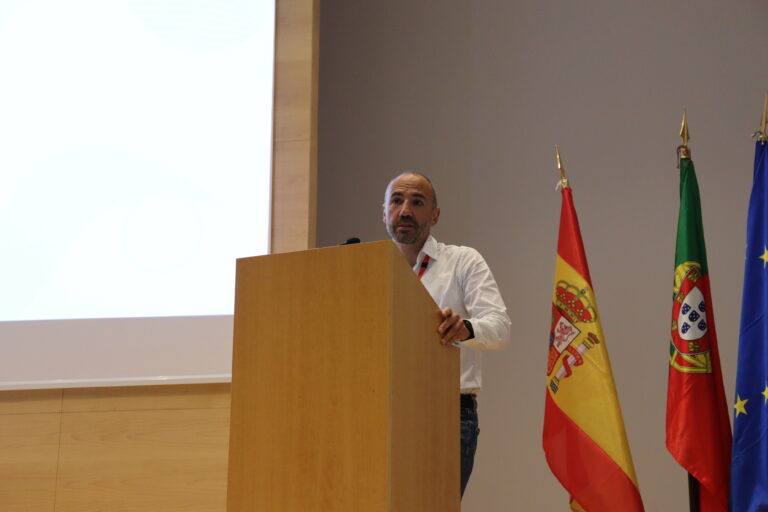
A sky full of gold nanostars
After a brief overview of the project, it was time for the INL team to discuss their research developments and how they contributed to completing the puzzle.
INL team, composed of six researchers, was responsible for transforming biocompatible hydrogels developed at Stemmatters into implantable biosensors. The biosensing component comes from incorporating plasmonic nanoparticles into the hydrogels – those are metallic particles with unique optical properties due to their size and shape. In the case of the SENTINEL project, the particles incorporated in the hydrogel are made of gold. They are called “gold nanostars” because, under the electron microscope, they look like stars up in the sky. Once incorporated in the hydrogel, these particles amplify the inherent Raman signal from the surrounding molecules, which will be acquired and analyzed to construct different patterns depending on the presence of prostate cancer biomarkers and their level. What is this signal about? How is it detected? We will talk about it further ahead.

INL has extensive experience in using these biosensors in cancer disorders and beyond. However, as Lorena Diéguez, Leader of the Medical Devices Group and Principal Investigator of this project at INL, told us, this was the first time they could implant this nanotechnology and demonstrate its behavior in vivo. Studies on the stability, biodegradability, and toxicity of the hydrogel and biosensor led to successful outcomes, guaranteeing that the hydrogel was not harmful in clinical studies. Furthermore, the team performed tests on cell lines and samples from patients, where the results were promising – it was possible to successfully distinguish samples from cancer patients from samples obtained from healthy donors.
The biomedical engineering puzzle piece of SENTINEL across the Atlantic
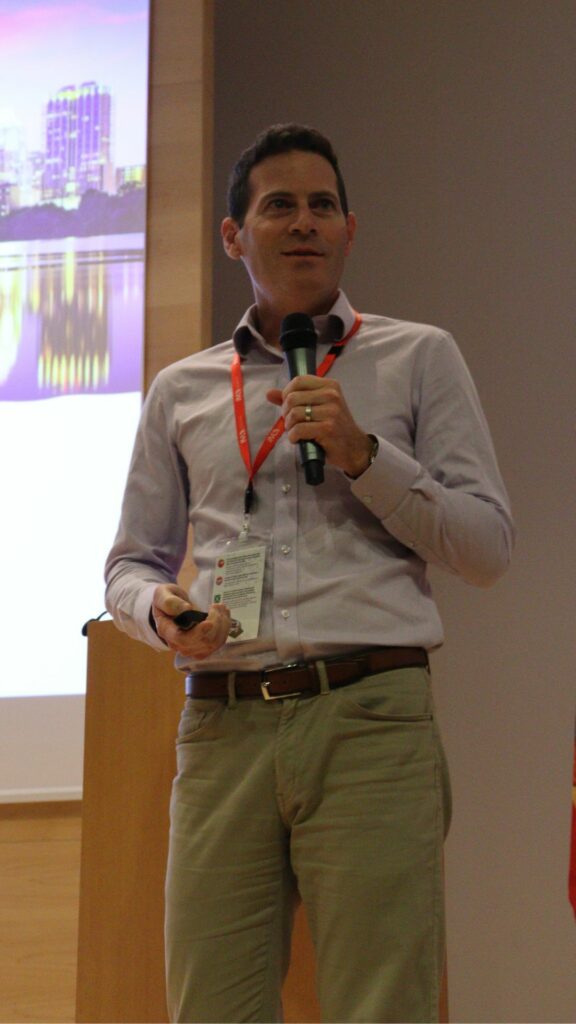
About 8000km (or 5000 miles, for the folks that don’t use the metric system) separates Braga from Austin. However, nothing kept these researchers from progressing with the project – not even the pandemic. James Tunnell, Director of the Biophotonics Laboratory, Professor of Biomedical Engineering at UT Austin, and Principal Investigator of this project, presented how his team was responsible for the engineering puzzle piece.
UT Austin’s role in this project focused on developing and validating a handheld Raman spectroscopy device. When targeting a laser light on a certain part of the body, such as the wrist, the molecules present scatter this light in a wavelength characteristic of each molecule, called a “Raman fingerprint”.
While some diagnostic methods quantify specific molecules related to prostate cancer, such as the Prostate-Specific Antigen (PSA), SENTINEL’s approach is more holistic. Instead of analyzing the “Raman Scatter” of specific molecules, the device will simultaneously detect a pattern of these signals from multiple biomolecules. With the help of a Machine Learning algorithm developed by the team in Austin, it was possible to identify whether these patterns corresponded to the presence or absence of disease.
But then, what are the previously mentioned gold nanostars for? To further amplify the “Raman fingerprint” signal, enhancing its capture.
Samples of the injectable biosensor, produced by Stemmatters and INL, were tested in Austin by James Tunnell’s team. The technology was evaluated in animal and human serums at the American partner, with promising results.
These results came from an intense multidisciplinary collaboration, which James Tunnell highlighted as very positive when we had the opportunity to interview him. “I think this project brings together an extensive range of various aspects all into one, so for me, it has been the most interesting piece of it”, said the researcher.
From in vitro to in vivo – the pieces that connect the lab to life
As results seem promising, the study is expected to move from the laboratory, “in vitro”, to living organisms, “in vivo”. This way, researchers can study the body’s response to the injectable biosensor and see if the positive outcomes are maintained.
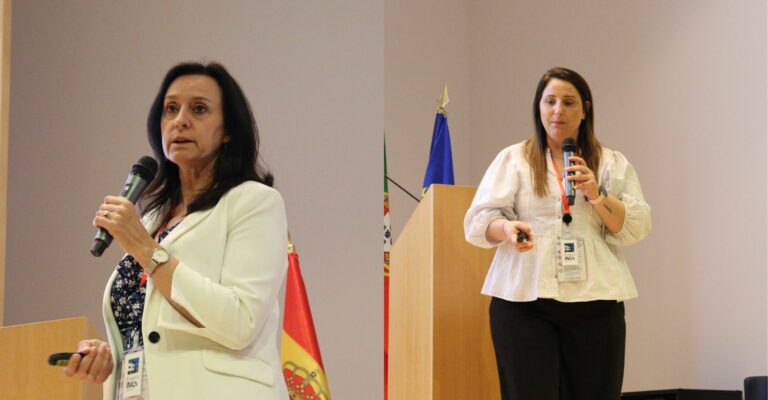
To this end, researchers Fátima Baltazar and Olga Martinho, from Life and Health Sciences Research Institute (ICVS) shared their role in this project: preparing in vivo studies and optimizing the methodology used. We learned that injecting the biosensor into living organisms was possible, remaining significantly intact after several days. However, studies are still ongoing.
Clinical studies are crucial to successfully transfer a remote patient monitoring method to the market. It is the only way to ensure that the technology is safe and that signs of prostate cancer recurrence can be detected early. To ensure that the results retrieved are reliable, it is crucial that all data during the study is collected, cleaned, and managed in compliance with regulatory requirements. 2CA Braga, which has close contact with hospitals, is charged with this assignment. Rosana Magalhães, Clinical Project Manager at this association, was tasked to present the clinical studies preparation process, which has only begun recently.
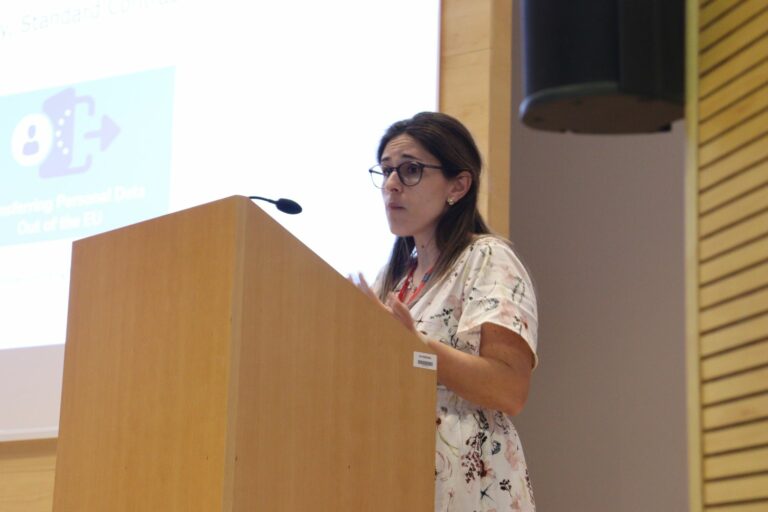
The future of SENTINEL: ambitious for the researchers and hopeful for the patients
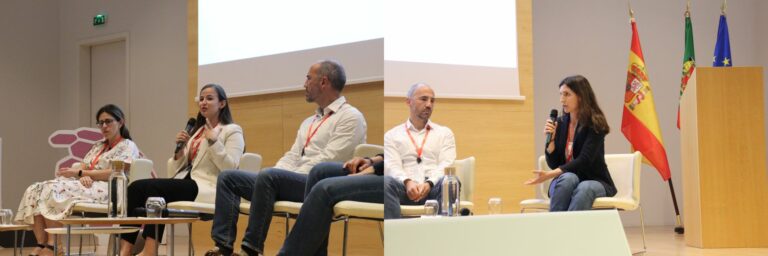
After a tasty coffee break, there was a round table to discuss the future of SENTINEL’s technology, what challenges are expected after the project’s end, and how cancer patients usually cope with the news of promising clinical studies and clinical trials. The panel comprised Rosana Magalhães, Isabela Monteiro (Junior Psychologist at Liga Portuguesa contra o Cancro), Rui Sousa, and Andreia Passos, our Executive Director. Future funding sources are the seed of hope for SENTINEL’s researchers, who want to get the project progressing as much as cancer patients and their families. To the latter, cancer research is a beacon of light to an improved quality of life and, ultimately, to a cure.
Besides the round table, we had the opportunity to further understand SENTINEL’s next steps through the voice of Rui Sousa.
After this enriching afternoon, we left Braga feeling amazed by how much was possible to achieve in just three years (and during a global pandemic). This made us want to follow the developments of this project very closely in the future, hoping that SENTINEL reaches its ultimate goal: to improve the lives of patients with prostate cancer.
You can listen to the Cross Talks episode about SENTINEL here.

